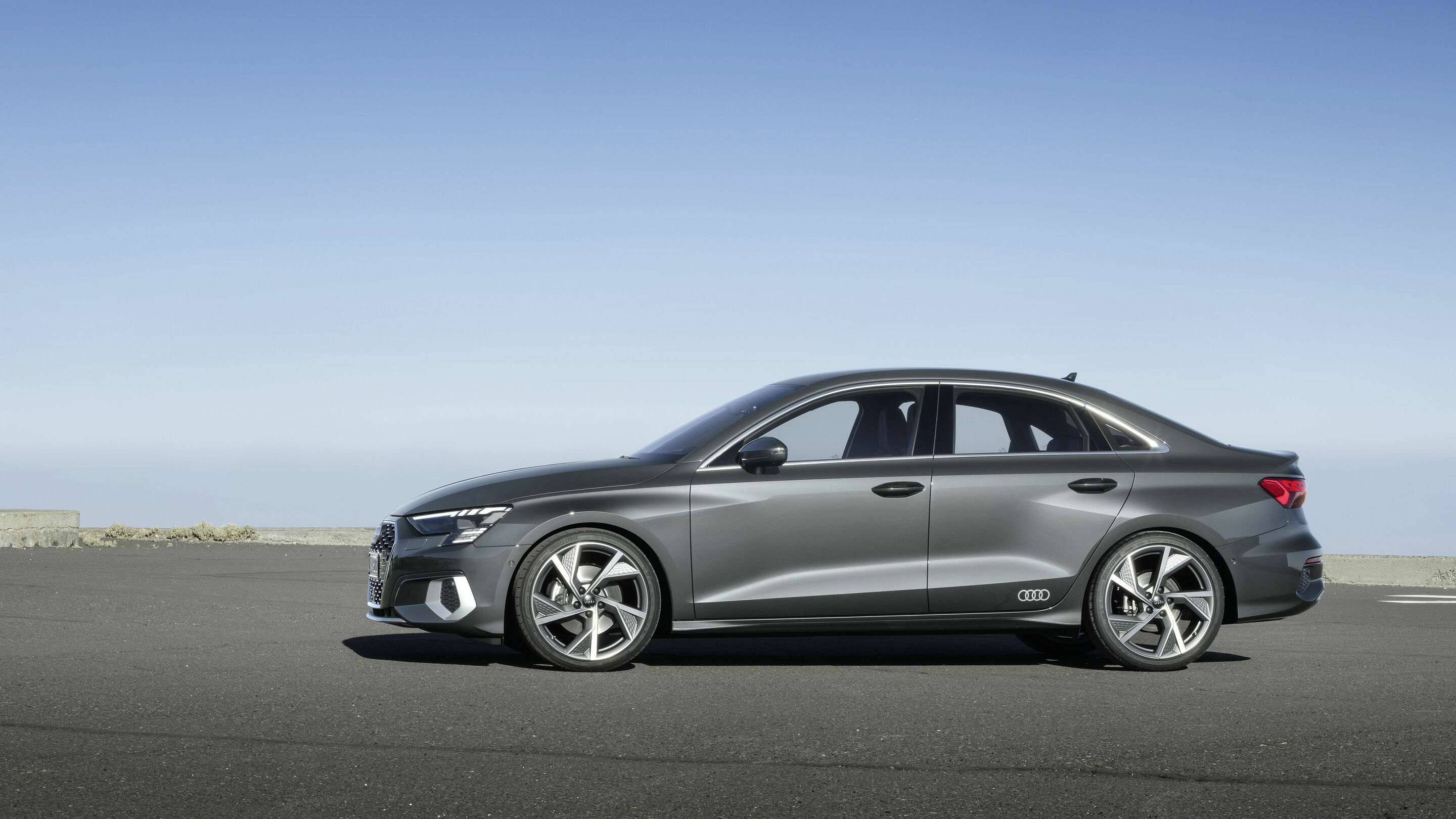Space Concept and Body
Back to overviewThe new A3 models offer more space and functionality combined with compact external dimensions. The Sportback measures 4.34 meters (14.2 ft) in length and 1.82 meters (6.0 ft) in width (without mirrors), and has therefore grown by just over three centimeters (1.2 in) compared with the predecessor model. The passengers benefit from this directly: They have more elbow room at the front and rear and more shoulder room in the rear. The new A3 Sedan has the same width, but measures 4.5 meters (14.8 ft) in length, making it four centimeters (1.6 in) longer than the predecessor model.
Both models measure 1.43 meters (4.7 ft) in height without the roof antenna. Like the wheelbase of 2.64 meters (8.7 ft), the height is identical to the predecessor model. By contrast, the slightly lower seat position for the driver is a new feature. It underlines the sporty character of the new A3 and benefits the headroom in the first seat row. The Sedan also gives the passengers in the second row one more centimeter (0.4 in) of headroom than before.
In addition to the standard seats, Audi offers the new sport seats with high side bolsters and integrated head restraints, which are standard in the interior S line. Seat heating, electric seat adjustment with a memory function, and a lumbar support with a pneumatic massage function are available in addition. There is even a wide range of steering wheels – round or flattened, with standard or large multifunction buttons, and with or without shift paddles, which are standard in combination with the S tronic.
Depending on the position of the rear seats, the luggage compartment in the new A3 Sportback has a capacity of 380 to 1,200 liters (13.4–42.4 cu ft). The loading floor can be inserted at different heights, and the rear shelf is located beneath it. On request, Audi will deliver the storage and luggage compartment package and an electrically powered tailgate, which can be opened and closed with a foot motion. The luggage compartment in the Sedan has a capacity of 425 liters (15.0 cu ft). Here, too, a tailgate that works with gesture control is available as an option. With the most powerful engine variants, both models have a towing capacity of up to 1,600 kg (3,527.4 lb) (braked, at a 12 percent incline).
The body is extremely impact resistant, rigid, and acoustically comfortable. With the 1.5 TFSI, the A3 Sportback has an unladen weight (without driver) of just 1,280 kilograms (2,821.9 lb), while the A3 Sedan weighs only slightly more at 1,285 kilograms (2,832.9 lb). In the passenger cell, components made of hot-formed steel, which combine high strength and low weight, form a strong compound. They account for around 30 percent of the weight of the body shell in the Sportback and Sedan. The engine hood is made of aluminum. Thanks to complex soundproofing and sophisticated aeroacoustics, it is very quiet in the interior of the new A3. Privacy glazing for the rear is available as an option: The windows are tinted and make it difficult to look into the vehicle interior.
With drag coefficient values starting from 0.25 for the A3 Sedan and 0.28 for the A3 Sportback, both models are particularly streamlined, which reduces CO2 emissions and fuel consumption. Aerodynamics developers and designers started working together closely at a very early stage and optimized many areas of the body, including the exterior mirrors and the underbody, which received large-area paneling and finishes in a diffuser. With the Sedan, the relatively high rear end and the large spoiler on the tailgate have a further positive impact on the aerodynamics.
The 110 kW TDI engine variant has a controllable cool-air inlet This involves two horizontally arranged louver modules behind the Singleframe that are actuated electrically. They regulate the flow of air intelligently and according to the situation, which benefits both the cooling output and the streamlined airflow. The brake cooling with a neutral drag coefficient, where the air is guided from the engine compartment through the wheel arch shells to the brakes, is another new feature. This solution is more aerodynamically efficient than the conventional air duct from the underbody.
The equipment, data and prices stated here refer to the model range offered for sale in Germany. Subject to change without notice; errors and omissions excepted.
